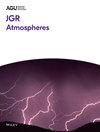This study investigates the physical processes behind extreme precipitation events (EPEs) in the Himalayas, notorious for causing frequent floods and significant loss of life and property. Due to the presence of complex terrain, understanding the driving factors of these EPEs is challenging. Here, we decipher the precipitation characteristics and their driving factors responsible for the occurrence of EPEs in the Western Himalayas (WH) for the period 1979–2020. EPEs are defined as events exceeding the 99th percentile threshold. The extreme precipitation in the WH is contributed by both large-scale precipitation (accounting for 61%) and convective precipitation (39%). Moreover, 25.49% of EPEs in this region are directly associated with monsoon depressions. The presence of distinct upper-tropospheric gyres flanking the WH, along with a prominent zonal wave pattern, promotes a southward extension of the trough. This intensifies the low-level convergence of moisture-laden winds from the adjoining seas, resulting in substantial moisture availability for the EPEs. An omega-type blocking pattern emerges 4 days before EPEs, facilitating the intrusion of an extratropical cyclonic circulation. This circulation, characterized by its slow eastward and equatorward movement, leads to low-level moisture flux convergence and ascending motions, which in turn trigger the EPEs. This highlights the crucial role of extratropical signals in driving EPEs and implies that tropical-extratropical interactions play an important role in these EPEs. Furthermore, the shifting of the Intertropical Convergence Zone is strongly linked to the enhancement of the intensity of EPEs. Moreover, moisture budget analysis shows that EPEs over the WH are primarily driven by vertical advection, with the dynamic (thermodynamic) terms explaining 92% (8%) contribution. The intensified diabatic heating structure further enhances the convection, facilitating the development of deep convection which controls the local thermodynamics of these EREs. Lastly, our study demonstrated that most intensified and persistent EPEs over the Himalayas are found to be linked with Quasi-Resonance Amplification, which is driven by baroclinic waves with 5 and 8 zonal wave numbers that contribute to these EPEs.


